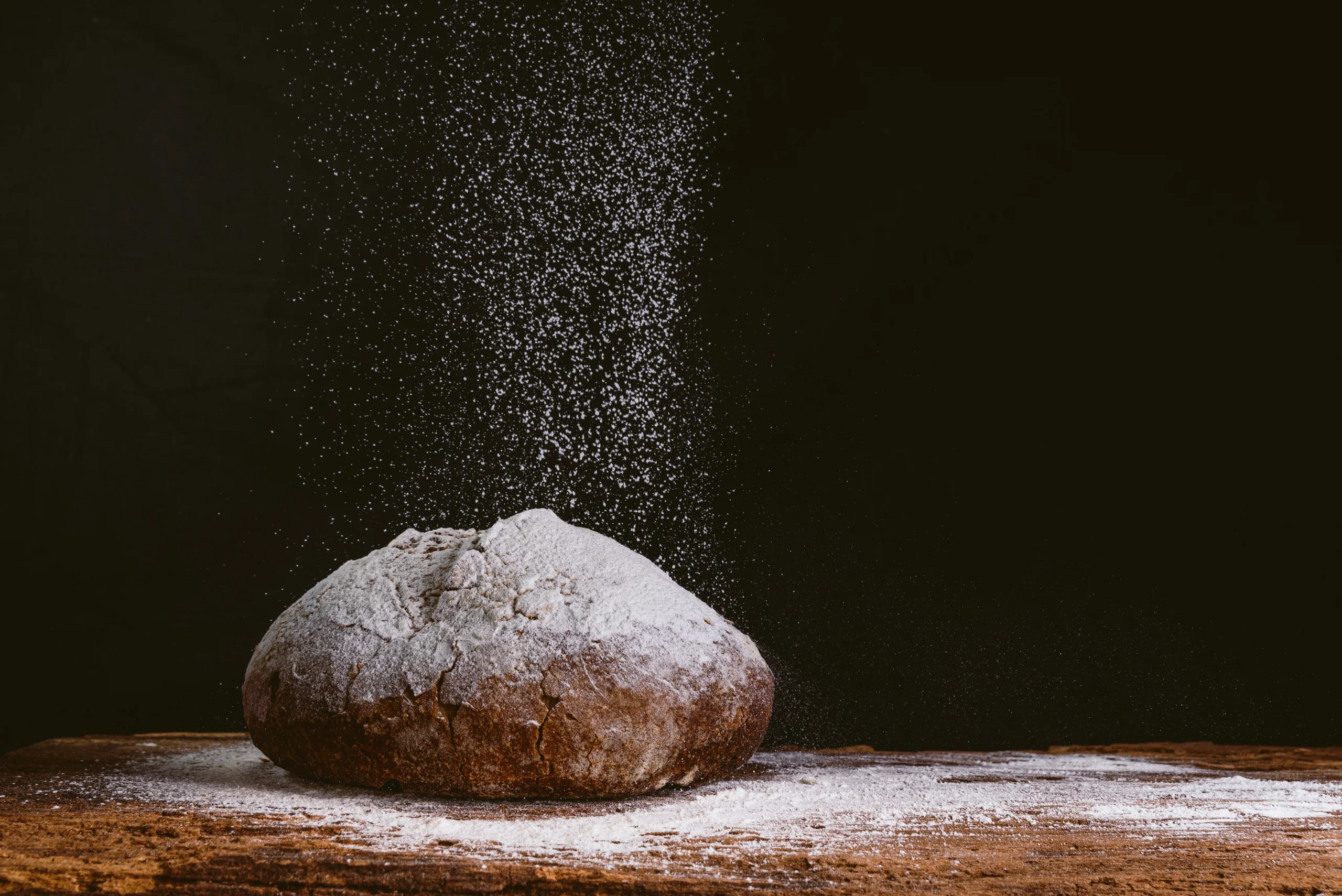You stand in the baking aisle, staring at a dizzying array of options: bread flour, whole wheat, rye, all-purpose… the list goes on. Then the real question hits you: “Do I need a different flour for my starter than for my actual bread?”
If you’ve ever felt that wave of confusion, you’re not alone. Finding the best flour for sourdough can feel like trying to learn a secret handshake, with every baker offering a different opinion.
But it doesn’t have to be complicated.
This is the only guide you’ll need. We are going to demystify your choices once and for all. We’ll provide crystal-clear recommendations for feeding your starter and for baking your perfect loaf, all while explaining the simple science behind the “why.”
Get ready to leave the confusion behind and start baking with total confidence.
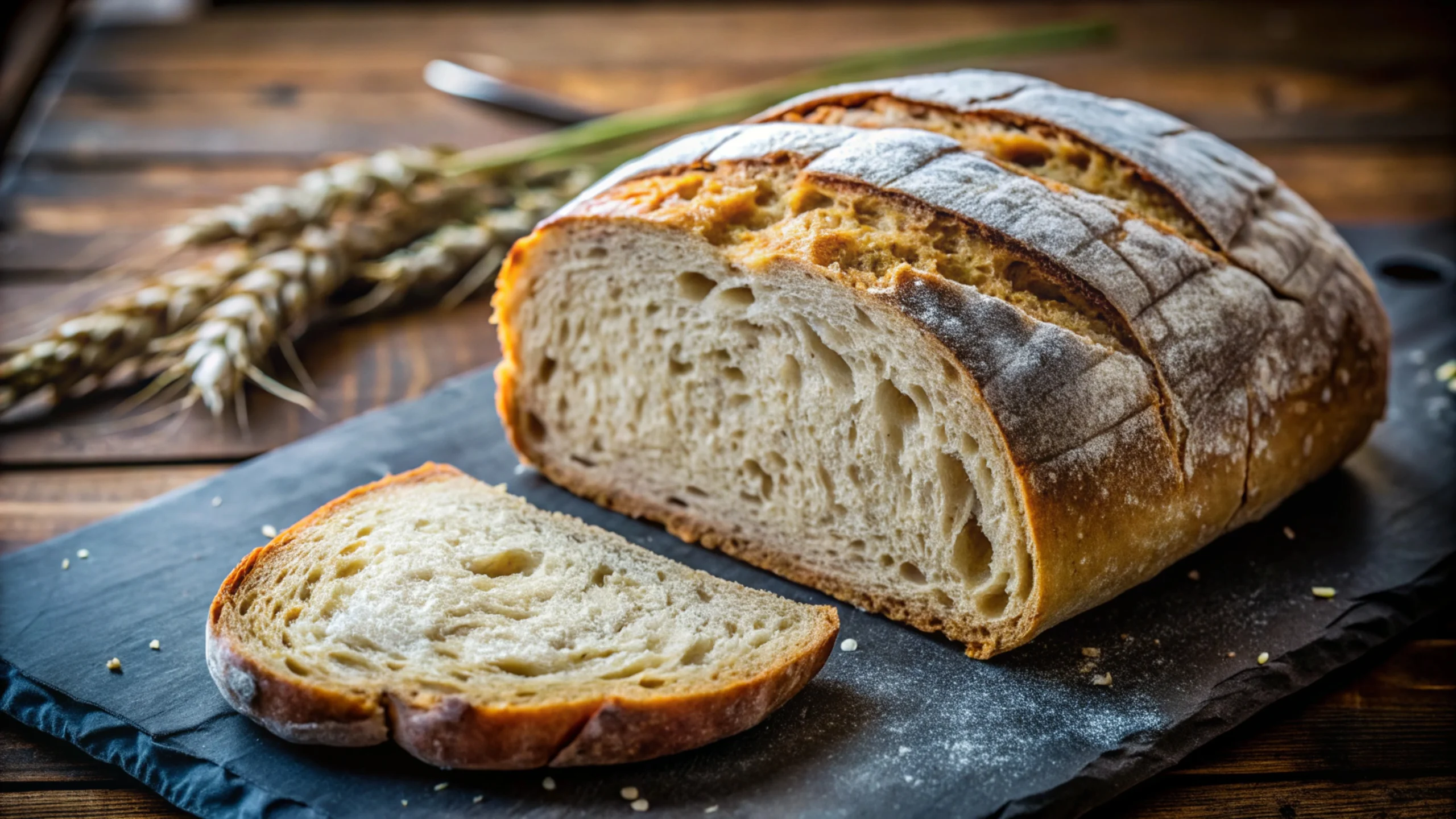
Flour Fundamentals: 2 Key Terms Every Baker Must Understand
Before we can choose the best flour for sourdough, we need to learn how to read the bag like a pro. Forget the marketing—there are only two numbers that truly matter for predicting your success: protein and ash content.
Understanding these two simple terms is the key that unlocks consistent, bakery-quality results at home.
Protein Content (The Key to a Great Rise)
Protein is the single most important factor for the structure and chew of your sourdough. When you mix flour with water, its proteins link up to form gluten.
Think of this gluten network as a series of tiny, super-strong balloons inside your dough. As the yeast ferments and releases gas, these balloons trap that gas, allowing your dough to rise high and create that beautiful, open crumb we all strive for. More protein means stronger balloons.
Here’s a quick guide to typical protein levels:
| Flour Type | Typical Protein Content |
| All-Purpose Flour | 10% – 12% |
| Bread Flour | 12% – 14% |
| Whole Wheat Flour | 13% – 15% |
As you can see, choosing a flour with higher protein, like bread flour, gives you a stronger foundation for a great loaf.
Ash Content (The Secret to Flavor & Fermentation)
If protein content builds the house, ash content is what makes it a home. This is the “golden nugget” that experienced bakers use to their advantage.
Put simply, ash content is a measure of the mineral content left in the flour after the bran and germ are sifted out. These minerals—like phosphorus and magnesium—act like a superfood for the wild yeast and bacteria in your sourdough starter, significantly boosting fermentation activity.
This extra mineral content also adds a deeper, nuttier, more complex flavor to your final bread and even helps your crust develop a richer, darker color. As a general rule, the more whole-grain the flour, the higher its ash content.
The Best Flour for Your Sourdough Starter
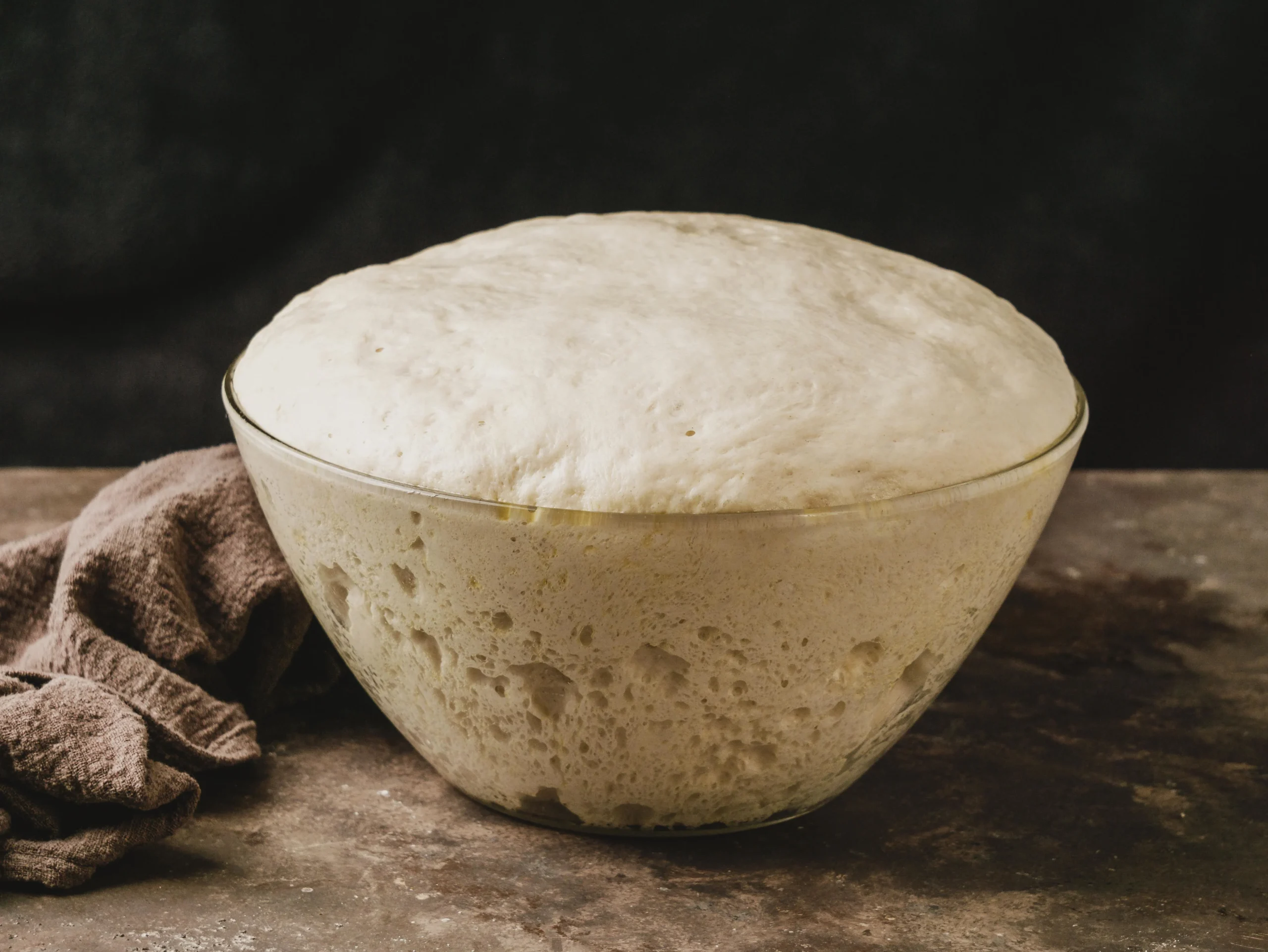
Your sourdough starter is a living, breathing pet. And just like any pet, its health and activity depend entirely on what you feed it.
Choosing the right food is the first step to building a powerful starter that can raise a loaf of bread beautifully. Let’s break down the best options for every stage of its life.
For a Brand-New Starter: Whole Grains are King
Think of a brand-new starter like a baby. It needs the most nutrient-dense food possible to grow strong and active, and this is where whole grain flours like whole wheat and rye are the undisputed kings.
The scientific reason is simple: the bran and germ in whole grains are packed with the wild microbes and essential minerals your starter needs to kickstart fermentation. Using these flours is like giving your baby starter a superfood smoothie to ensure it gets the best possible start in life.
For a Mature, Established Starter
Once your starter is mature—meaning it’s reliably doubling in size after every feeding—it has grown into a robust adult. It’s no longer as picky and can thrive on a more varied diet.
At this stage, you have flexibility. You can continue with whole grains, or switch to a high-quality unbleached all-purpose or bread flour for regular maintenance. Many bakers even feed their mature starter a custom blend, like a 50/50 mix of bread flour and whole wheat, to keep it strong and flavorful.
How to Switch Your Starter’s Flour (A Practical Guide)
Want to change your starter’s diet? It’s easy, but you need to do it gradually to avoid a “digestive shock” that could make it sluggish. This simple, step-by-step process is the safest way to transition.
- Feeding 1: Start with 75% of the old flour and introduce just 25% of the new flour. Mix with water and let it ferment as usual.
- Feeding 2: The next day, change the ratio to a 50/50 blend of the old and new flours.
- Feeding 3: Now, increase to 75% of the new flour and just 25% of the old flour.
- Feeding 4: Your starter is now ready for 100% of its new flour diet.
Watch your starter’s activity during this process. A happy starter will continue to rise and fall predictably.
The Best Flours for Sourdough Bread Loaves
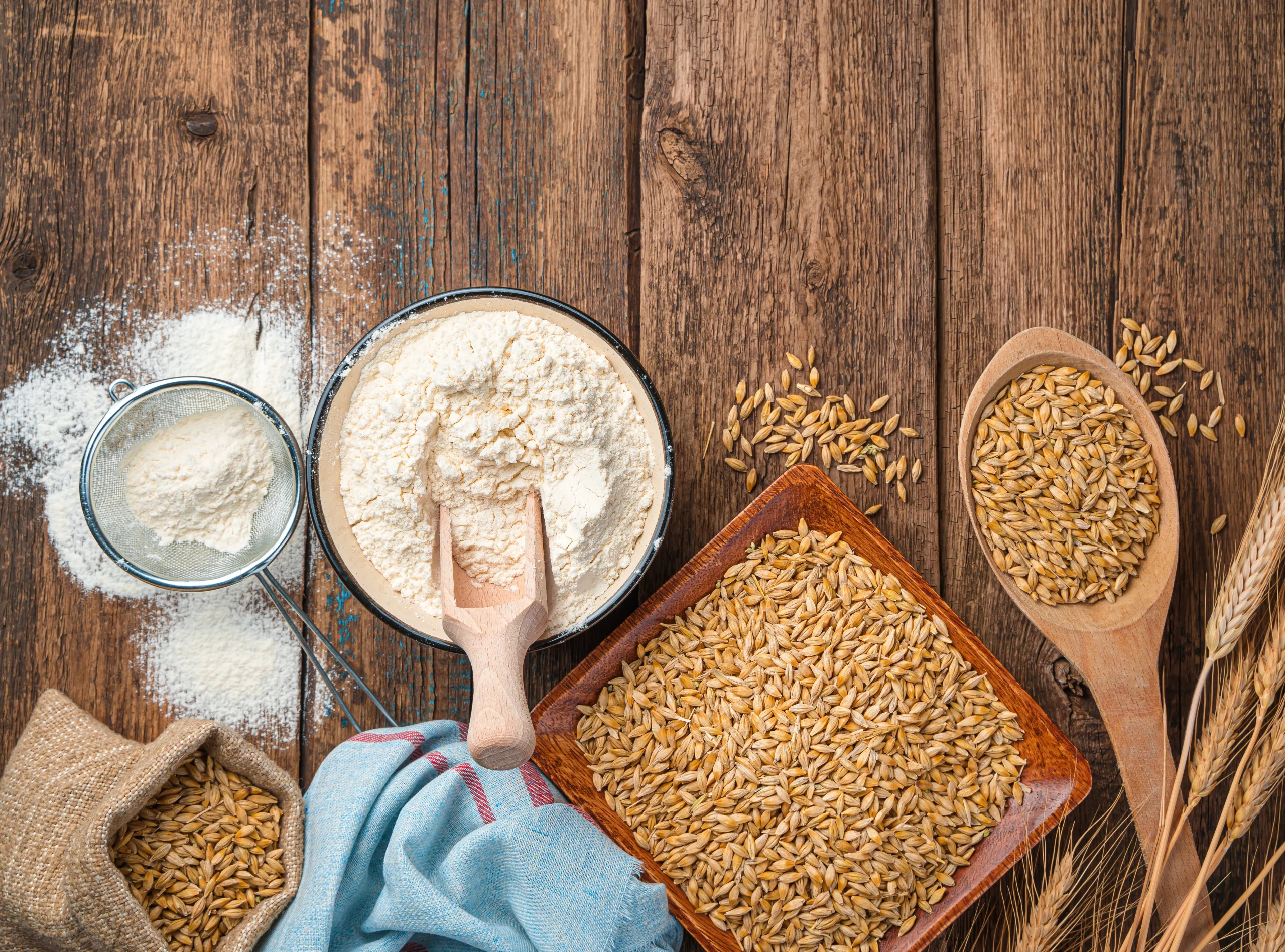
Now for the main event—building the perfect loaf. While your starter is the engine, the flours you choose for your main dough are the bricks and mortar that determine its final structure, flavor, and texture.
Think of these flours as your artist’s palette. Let’s explore the essential colors you can use to create your masterpiece.
Bread Flour (The Strong & Reliable Choice)
If there is a trusty workhorse in the sourdough world, it’s bread flour. Its incredibly high protein content is the secret to a tall, proud loaf with a satisfyingly chewy crumb.
This strength makes it the most reliable and forgiving option, especially for beginners. It builds a robust gluten network that expertly traps the gases from fermentation, leading to a beautiful rise and predictable results every time. Its flavor is a clean, subtle canvas, allowing the sourdough tang to shine through.
Whole Wheat Flour (For Flavor & Nutrition)
Whole wheat flour is the rustic, flavorful cousin to bread flour. It brings a wonderful depth, with nutty and earthy notes that create a more wholesome and complex loaf.
Because it contains the bran and germ, it’s packed with extra nutrients and fiber. Be aware, however, that these same bran particles can act like tiny scissors, cutting some gluten strands and leading to a slightly denser loaf. It’s also a “thirstier” flour, so you may need to add a little extra water to your dough.
Rye Flour (For a Tangy, European-Style Loaf)
Rye is the wild card, the flavor bomb of the sourdough world. If you love a deeply tangy, European-style loaf with a distinctive, almost spicy flavor, a touch of rye is your secret weapon.
It’s a superfood for your yeast and acts as a fermentation accelerator. However, rye is very low in gluten and cannot build a strong structure on its own. Think of it as a potent team player, not a solo artist; it must be used in a blend with a stronger flour like bread flour to avoid a dense, gummy loaf.
All-Purpose Flour (Can it Work?)
This is the million-dollar question, as a bag of AP flour sits in nearly every pantry. The answer is a solid maybe, but you have to play the protein lottery.
Not all all-purpose flours are created equal. If you want to use it for sourdough, you must check the nutrition label and choose a brand with at least 11.7% protein. Even then, expect a softer, less chewy loaf with a slightly less open crumb—which can actually be perfect for sandwich bread.
Putting it All Together: Our Go-To Sourdour Flour Blend
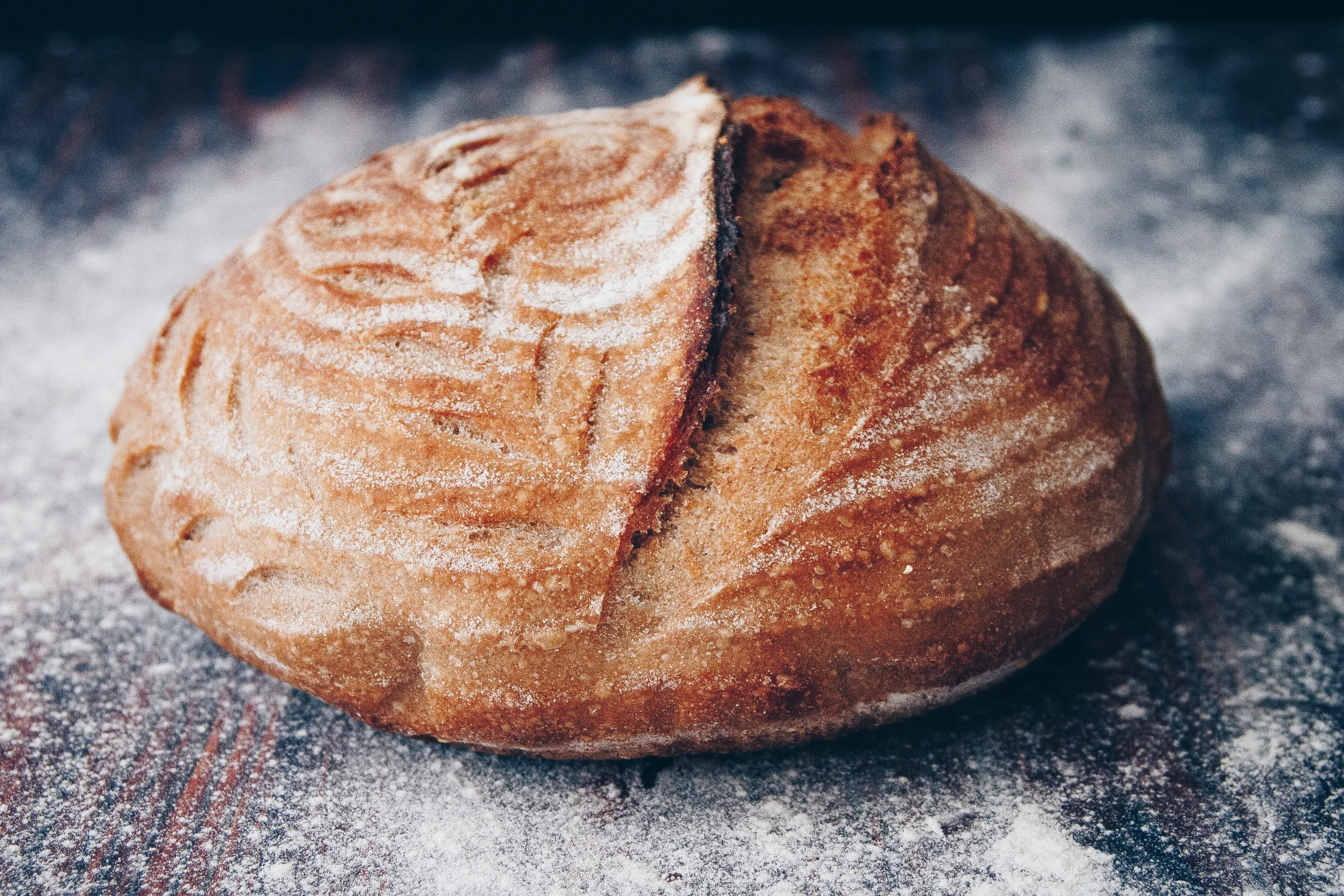
We’ve explored the palette, now let’s paint the picture. While endless combinations are possible, having a reliable, go-to formula is the secret to consistent success.
If you’re looking for a foolproof starting point that delivers amazing results, this is the blend we recommend for nearly any sourdough recipe.
Our Perfect Beginner’s Blend:
- 80% Bread Flour
- 15% Whole Wheat Flour
- 5% Rye Flour
Think of this as the perfect team. The bread flour (80%) is your star player, providing the high-protein structure needed for a fantastic rise and a chewy, open crumb. It’s the strong, reliable foundation of your loaf.
The whole wheat flour (15%) is your flavor expert, adding a wonderful nutty depth and a boost of nutrition that you can’t get from white flour alone.
Finally, the rye flour (5%) is your secret weapon. This tiny amount works like a magic ingredient, accelerating fermentation and adding a subtle tangy complexity that makes your bread taste truly artisanal.
Flours to Avoid When Baking Sourdough Bread
Knowing what not to use is just as important as knowing what works. While experimentation is part of the fun, steering clear of these two types of flour will save you from the disappointment of a flat, lifeless loaf.
Consider this your friendly warning to help you avoid common sourdough pitfalls.
Cake & Pastry Flour
These flours are fantastic for creating tender cakes and flaky pastries, but those same qualities make them a disaster for sourdough.
Their secret is a very low protein content. This prevents a strong gluten network from forming, which is exactly what you don’t want. Using them will result in a weak, slack dough that simply cannot trap the gases needed to rise, leaving you with a dense, gummy puck.
Bleached Flour
This is the number one enemy of a healthy sourdough starter. Always choose unbleached flour.
The chemical bleaching process doesn’t just whiten the flour; it also damages and kills off the wild yeast and beneficial bacteria that are naturally present. These are the very microorganisms your starter needs to thrive and ferment your dough, so using bleached flour is like trying to start a fire with wet wood.
FAQ – Best Flour for Sourdough
1. What’s the best flour for a beginner sourdough baker?
For beginners, the best choice is a high-quality, unbleached bread flour with a protein content of 12% or higher. It’s the most forgiving, provides a strong gluten network for a great rise, and delivers consistent, reliable results while you are learning the process.
2. Is bread flour the same as all-purpose flour?
No, they are not the same. The primary difference is protein content. Bread flour typically contains 12-14% protein, while all-purpose flour is lower, around 10-12%. This extra protein in bread flour is crucial for creating the strong, elastic gluten needed for the chewy texture of sourdough bread.
3. Can I use 100% whole wheat or rye flour in my bread?
You can, but it is challenging, especially for beginners. Using 100% whole grain flour will result in a much denser, heavier loaf because these flours have less gluten-forming potential. For the best results, it’s recommended to use them as part of a blend, typically making up no more than 30-40% of the total flour.
4. Is organic flour better for sourdough?
Organic flour can be beneficial because it guarantees the flour is free from pesticides, which can potentially inhibit the activity of the wild yeast and bacteria in your starter. However, many high-quality, non-organic flours work perfectly well. The most important factor is choosing an unbleached flour with the right protein content.
5. Does it matter if my flour is bleached or unbleached?
Yes, it matters immensely. You should always use unbleached flour for sourdough. The chemical bleaching process can damage the natural microorganisms present in the flour that are essential for kickstarting and sustaining the fermentation in your sourdough starter and dough.
Your Flour Journey Starts Now
The secret to the best flour for sourdough isn’t about finding one single “perfect” bag. It’s about understanding the right flour for the right job.
The best approach is a simple, two-part strategy: feed your new starter nutrient-rich whole grains to make it strong, and build your bread with a blend led by high-protein bread flour to achieve that perfect rise and texture.
From here, the true fun begins. Think of our go-to blend as your starting point, not the final destination. Don’t be afraid to experiment by adjusting the percentage of whole wheat or adding a different ancient grain. Each loaf is a chance to discover the unique flavor and texture that you love most.
